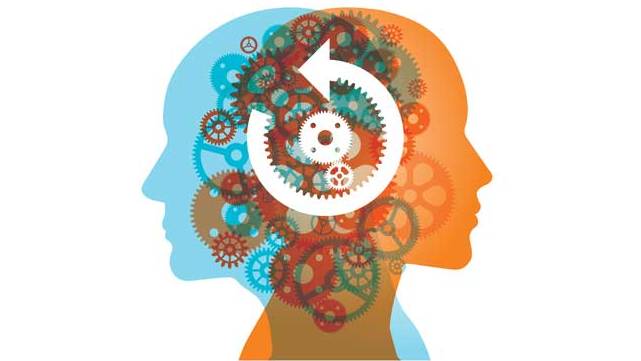Going digital at pace
Ready or not, the coronavirus crisis has pushed organisations to embrace new technology

INNOVATION & IMPROVEMENT
Image: Istock

James Tickell
Partner, Campbell Tickell
The COVID-19 pandemic has accelerated our steps towards a more digital future. Remote working has become a reality for thousands in just two weeks, rather than two hundred. Zoom meetings are suddenly commonplace, and seem to work nearly as well as the real thing, if not better. Many transactions have shifted online in ways that may have been hard to imagine even at the beginning of this year.
At the same time, human connections and experience have become more important, with successful organisations in every sector focused on the customer experience, and the wisdom and insights of frontline staff. Suddenly, the idea of housing’s digital future has moved out of the science fiction arena and into the very near future. How might such a system look and what opportunities and pitfalls could it bring?
Buildings and repairs: the easy bit
For buildings, it is easy enough to envisage – we all know about the “internet of things”. Embed smart chips and sensors in major building components, and hey presto, maintenance becomes so efficient. That’s easier for newbuilds of course, but existing stock can be retrofitted. Add in regular drone surveys, and a landlord can know pretty much everything about its property assets, in real time, without ever leaving the home office.
When a tenant – or a sensor – actually has to call in an unpredicted repair, nine times out of 10 it will be clear what is needed. No more going back to the depot for the missing boiler or lift parts, or having to order them from Germany or Peterborough. Let’s assume that future operatives will still be human, even if vans are eventually self-driving.
Artificial intelligence then applied to data allows pattern recognition and an uncanny ability to fix problems before they arise. A ‘just in time’ approach enables a reduction in stockholding, while careful journey planning saves on mileage and time. ‘No shows’ by the tenants are largely avoided, as sensors will be able to indicate whether anyone is there to answer the door. Once an operative is on-site, they will be able to carry out any other scheduled tasks before moving on.
Blockchain technology creates self-verifying and tamper-proof databases (see video). Eventually it will have profound effects on contracts, asset registers, land title and more besides.
“Compliance and safety become a doddle, while the savings are massive”
Compliance and safety become a doddle, while the savings are massive in terms of staffing, materials and time. As blockchain becomes a reality, we can speculate that internal auditors, complex assurance systems and middle managers more generally will largely become a thing of the past. Organisations will de-layer, with more horizontal structures.
“By 2030, face recognition systems should be able to recognise people from all different ethnic backgrounds, a distinct glitch in today’s matrix ”
The privacy conundrum
So far so good? Or were you uneasy about the privacy implications of sensors revealing who was there to answer the door? There’s plenty more to think about. Examples already exist – you can easily buy an airline ticket without speaking to a human. Of course, if things go wrong and you do need to speak to someone, then it is a different story. It can take hours, listening to music, pressing buttons, going in automated loops, and spending a small fortune on premium phone lines.
Maybe lettings and routine tenancy work could be done a bit like that, although without the waiting and the music? Not sure? We can hope that 2030 Artificial Intelligence, unlike today’s artificial imbecility, will be better at sorting out the odd anomaly. It could also be brilliant at collecting and organising tenant feedback, giving volume to the tenant voice.
Arrears could be dealt with similarly. Even better, AI will predict well in advance which households will be vulnerable to financial hardship, allowing support to be directed appropriately. In the same way, it would be possible to predict which households would make greater demands on maintenance services, or end their tenancies in an untoward manner.
Some landlords might be tempted not to let to such households in the first instance, but the value of the business intelligence accrued would surely outweigh such concerns?
It goes on. Face recognition technology could be just the ticket for preventing illegal subletting, and for dealing with anti-social behaviour. In fact, you could do away with keys altogether, with entry systems recognising and admitting only tenants and their families. By 2030, systems should be able to recognise people from all different ethnic backgrounds, a distinct glitch in today’s matrix.
As regards more vulnerable residents, the possibilities for automation are already considerable. Call systems, with fridge and floor sensors, can detect whether someone may be unable to get out of bed, have fallen or not be eating. In Japan, robot nurses, medicine dispensers and pets play an increasing role, so that care can be given with little or no human contact. As for company… there’s always the possibility of a chat with Alexa.
Ethics and practicalities
Clearly, new technologies are already with us, and will become more effective in time. Financial savings are there to be made for landlords, and these can be reinvested into better customer experience, care, support and empowerment. Or they can become more generous dividends for investors.
New communication technologies can be used in different ways. Exciting new participative governance structures can be enabled by such platforms as Loomio. But on the dark side, very similar technology can drive towards the surveillance capitalism explained by Shoshana Zuboff, in ‘The Age of Surveillance Capitalism’, under which corporate entities can amass data about customers, and exploit it to control behaviour, sell additional services and increase efficiency (see video).
“Similar technology can drive towards surveillance capitalism”
Taking stock
Where does that leave us? Looking at the fragmented and often obsolete state of sector IT systems, the possible retrofitting of millions of properties in a short timescale seems optimistic.
The technologies needed for housing’s next stage of digitisation already exist and will be widely used by the Ubers and Easyjets of the near future. But a safe prediction is that many landlords will still be using the same IT systems as now for some years to come, perhaps with some smarter trend analysis.
The overall direction though is certain, and should not be ignored. The technology itself is morally neutral and all will depend on how we choose to use it.
As social landlords grapple with new ways of working, it will be vital to remember and reinterpret their social purpose for the new context.
Mission statements are all big on customer focus, and on how ‘our people’ are our greatest asset. Let’s all try and keep it that way as we recover from the pandemic, and keep up Zuboff’s ‘Fight for a Human Future’.
This article is based on an earlier (pre-pandemic) piece, following a seminar on the automation of housing.


